Carl Braden
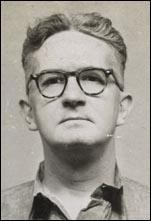
Carl Braden was born in New Albany, Indiana, on 24th June, 1914. His father had been a railroad worker and an active trade unionist who had lost his job when Carl was eight years old while involved in a strike demanding better working conditions. "For months afterwards, the family ate almost nothing but beans. One of Carl’s dominant childhood experiences was of hunger – in the deep, psychological sense of not knowing when you would be able to get food to relieve it. For Carl, hunger meant growing up early. He became deeply aware of injustice… of the fact that many people, like his family, worked hard and still had nothing, and yet were harshly judged as poor White trash by families exactly like Anne’s." (1)
Braden parents were Catholics but his father had lost his faith and became an agnostic socialist and insisted that his son was named after Karl Marx. Carl's father was a member of the Socialist Party of America and a follower of Eugene Debs and used to take his son to political meetings. Carl went to a Catholic school, and when he was thirteen the nuns encouraged him to put his intellectual abilities in the service of God and to begin studying to become a priest but left his Roman Catholic seminary in Louisville at the age of 16 to become a newspaper reporter. This included the Louisville Herald-Post and The Cincinnati Enquirer. (2)
Carl Braden - Journalist
After the war he moved to the The Louisville Times, where he met Anne McCarty, a fellow reporter who was also active in progressive politics. Anne believed that the emergence of Adolf Hitler in Nazi Germany and the outbreak of the Second World War increased her opposition to racism: "My college years exactly coincided with World War II. I was part of a generation affected by a spillover of thirties liberalism and a revulsion to the racist philosophy of Nazism during the war. I wasn't that unusual then. Many of my friends in college were not in favor of segregation. We rejected our parents' ideas about race, just as we rejected them about sex." (3)
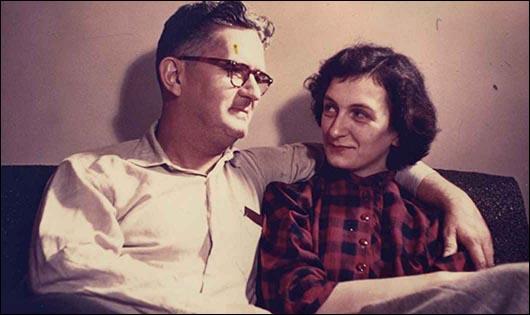
Carl Braden married Anne McCarty in 1948. Anne and Carl both became supporters of Henry Wallace who had formed the Progressive Citizens of America (PCA). Other members included Rexford Tugwell, Paul Robeson, W.E.B. Du Bois, Arthur Miller, Dashiell Hammett, Helen Keller, Jo Davidson, Thomas Mann, Aaron Copland, Claude Pepper, Eugene O'Neill, Glen H. Taylor, John Abt, Edna Ferber, Thornton Wilder, Carl Van Doren, Fredric March and Gene Kelly. A group of conservatives, including Henry Luce, Clare Booth Luce, Adolf Berle, Lawrence Spivak and Hans von Kaltenborn, sent a cable to Ernest Bevin, the British foreign secretary, that the PCA were only "a small minority of Communists, fellow-travelers and what we call here totalitarian liberals." Winston Churchill agreed and described Wallace and his followers as "crypto-Communists". (4)
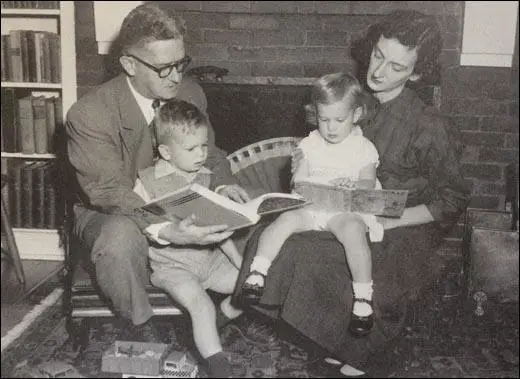
Wallace decided to stand in the 1948 Presidential Election. His running-mate was Glen H. Taylor, the left-wing senator for Idaho. The programme of Wallace and Taylor included new civil rights legislation that would give equal opportunities for black Americans in voting, employment and education, repeal of the Taft-Hartley Bill and increased spending on welfare, education, and public works. Their foreign policy program was based on opposition to the Truman Doctrine and the Marshall Plan. Anne and Carl Braden worked for his campaign but Wallace's chances were badly damaged when William Z. Foster, head of the American Communist Party, announced he would be supporting Wallace in the election. (5)
Wallace travelled to the Deep South and called for the end of the Jim Crow laws. He was attacked at every point he stopped and made a speech. One of his followers said: "You can call us black, or you can call us red, but you can't call us yellow." Wallace commented: "To me, fascism is no longer a second-hand experience. No, fascism has become an ugly reality - a reality which I have tasted it neither so fully nor so bitterly as millions of others. But I have tasted it." (6)
Harry S. Truman and his running mate, Alben W. Barkley, polled more than 24 million popular votes and 303 electoral votes. His Republican Party opponents, Thomas Dewey and Earl Warren, won 22 million popular votes and 189 electoral votes. Storm Thurmond ran third, with 1,169,032 popular and 39 electoral votes. Wallace was last with 1,157,063 votes. Nationally he got only 2.38 per cent of the total vote. Only one supporter, Vito Marcantonio, won his seat in Congress.
Andrew Wade Case
Carl Braden began work at the Louisville Courier-Journal whereas Anne Braden spent her time raising their three children, James, Elizabeth and Anita. They were both active member of the National Association for the Advancement of Coloured People (NAACP) and the American Civil Liberties Union (ACLU). In 1954 the Bradens became involved in helping Andrew Wade, an electrician, in buying a house. "Carl and I were both part of a statewide committee to repeal the Kentucky school segregation law. We were also involved in trying to break down discrimination in hospitals. In the spring of 1954, a Black friend, Andrew Wade, asked us if we would buy a house and transfer it to him. He and his wife had one child, two and a half years old, and another on the way. They were crowded into a small apartment and were anxious to move out of the city. Andrew had tried, but as soon as sellers found out he was Black, he wouldn't get the house. He decided the only way left was to have a white person buy it for him. Before he came to us, he had asked several others. For one reason or another, they refused. But we felt he had a right to a new house and never thought twice about doing it." (7)
Andrew, his pregnant wife, Charlotte and their 2-year-old daughter Rosemary - moved into their new home at 4010 Rone Court, Louisville. Anne Braden later recalled: "That night, they heard gunshots, and somebody was firing at the house, and Andrew says he told his wife to get down, but it didn’t hit anybody. And they looked out and there was a cross burning in the field next to them.” In the days that followed "a stone bearing a racial epithet hurled into a window, the local dairy refused to deliver milk; the Wades’ newspaper subscription canceled because the carrier wouldn’t deliver it." (8)
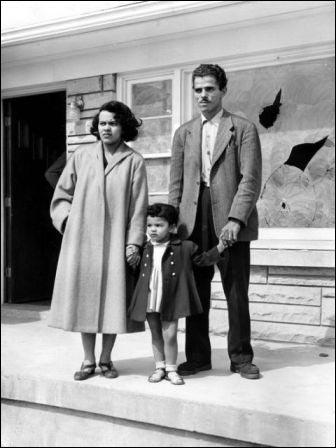
home in Shively the day after someone hurled a a rock through the front window.
Anne Braden explained: "A Wade Defense Committee was formed that had strong support in the Black community, but not a lot of whites. We got the police to put up a guard, which we never trusted. Some people volunteered to stay all night to help the Wades to keep watch.." (9) One of the guards was Lewis Lubka. “I was in the back kitchen with a gun. And when we were shot at we shot back. I was working days and helping guard the house at nights.” (10)
Millard Grubbs, a member of the Ku Klux Klan, who lived in Alabama, wrote to the local newspaper, Shively Newsweek, claiming that the Wade purchase as a "Communist conspiracy" to establish "a black beach-head in every white sub-division". He argued that segregation had been ordained by God and condemning the Marxist world plotters" who would undermine it. He went on to say that Presidents Franklin D. Roosevelt, Harry S. Truman and Dwight D. Eisenhower were involved in this conspiracy and that to challenge segregation was part of a "rising red bureaucracy". He ended his letter by inviting "loyal white people" to join his newly formed American White Brotherhood. (11)
The night of June 27, 1954, a bomb went off under Rosemary's room, causing $7,000 worth of damages to the property. Luckily, she had gone to spend the night with her grandmother. (12) The Louisville Police Chief Carl E. Heustis told Carl Braden that he had a confession from the man (a former policeman) who set the dynamite and there'd be an arrest in a few days. (13) Although the people responsible, the same who had participated in the cross burning just weeks earlier, were identified, they were neither arrested or indicted for the crime. (14)
On 16th September, the state prosecutor made a statement that there were two theories about the bombing. As Anne Braden explained: "One was that the neighbors blew it up to get the Wades out of the area. The other was that it was a Communist plot to stir up trouble between the races and bring about the overthrow of the governments of Kentucky and the United States. The prosecutor was developing the theory that Wade would never have thought of moving there on his own, because Black people are really happy with things as they are until white radicals stir them up." (15)
On 1st October, 1954, instead of the grand jury producing indictments against the people who blew up the house, those white people who had been supportive of the Wades were charged with sedition. This included Carl and Anne Braden, Vernon Bown, Mary Louise Gilbert, LaRue Spiker, Lew Lubka and I. O. Ford. Bown, a young white man who stayed with Charlotte Wade during the day while Andrew Wade was at work, was charged with the dynamiting of the house. (16) Amber Duke has argued that the only way this can be explained is that this was at the time of McCarthyism and anti-Communist hysteria. (17)
Anne recalled: "They raided our house and took all of our files. We'd been in touch with many different groups, and we had folders on left-wing organizations. They took a lot of our books. Carl had grown up in a socialist home, and he had a Marxist and left-wing library. They took anything with a Russian name: books by Tolstoy, Dostoyevsky, and Turgenev from a Russian literature course I had in college. The commonwealth detective who went through them testified that he didn't really know too much about books. When he was in school, he said, they made him read, and it turned him against books, and he hadn't read much since." (18)
The Bradens became victims of what became known as McCarthyism. On 9th February, 1950, Joseph McCarthy, a senator from Wisconsin, made a speech claiming to have a list of 205 people in the State Department that were known to be members of the American Communist Party (later he reduced this figure to 57). The list of names was not a secret and had been in fact published by the Secretary of State in 1946. These people had been identified during a preliminary screening of 3,000 federal employees. Some had been communists but others had been fascists, alcoholics and sexual deviants. If screened, McCarthy's own drink problems and sexual preferences would have resulted in him being put on the list. (19)
For the next two years McCarthy's Senate committee investigated various government departments and questioned a large number of people about their political past. Some lost their jobs after they admitted they had been members of the Communist Party. McCarthy made it clear to the witnesses that the only way of showing that they had abandoned their left-wing views was by naming other members of the party. This witch-hunt and anti-communist hysteria became known as McCarthyism. (20)
Lynn Burnett has argued: "During the period of McCarthyism, right-wing forces exploited the growing tensions between the Soviet Union and the United States that developed in the wake of the Second World War. They used those tensions to whip the American public into a state of fear: Communism, they said, would spread rapidly across the globe unless severe measures were taken. They warned that Communists had already infiltrated deep into American society, and were working with the Soviet Union to undermine the United States from the inside. After using this wildly unsubstantiated myth to whip the public into a state of fear, these forces then used that fear as an excuse to destroy causes they opposed – including civil rights and organized labor – under the pretense that such causes were Communistic. It was easy to manufacture the connection because Communists were, indeed, major supporters of racial justice and labor rights. Because Communists were highly involved in those causes, anyone devoted to those causes would have worked around and known Communists themselves. In the period of McCarthyism, anyone who was around Communists was framed as a Communist sympathizer, which was then equated with being an enemy of the state. This is what was now happening to Anne and Carl Braden." (21)
The defendants asked for and were granted separate trials. The state insisted that Carl Braden, the perceived ringleader face trial of the initial sedition charge. The American Civil Liberties Union (ACLU) provided Louis Lusky as his defence attorney and he faced an all-white jury. The state provided nine former American Communist Party. members, now paid FBI informants. "Their testimonies were largely biographical, detailing the evils of communism in their own lives and asserting that the CP-USA was an organization bent on the overthrow of the USA government." (22) Two of the witnesses, Matt Cvetic and Manning Johnson, were both later discredited. (23)
Prosecuting attorney, Scott Hamilton contended that the dynamiting of the Wade house was a Communist plot to excite racial hatred. He told the jury: "Sedition is communism and communism is sedition - there is no distinction." The defence on the other hand, argued that the prosecution was trying to get the jury to "say something the law doesn't say". Braden's attorney said the issue was simply "whether or not a man has the right to an opinion different from those in the community." (24)
Anne pointed out: "Carl was tried first. It was December... Every once in a while, they'd imply that we blew up the house, that Vernon Bown's radio was used to set off the dynamite. They introduced our books; tables of them were on trial. But the main testimony came from nine "expert" witnesses, gotten from the House Un-American Activities Committee. They were there to create atmosphere. None of them claimed to know Carl, but they testified that anybody who read those books was probably a Communist. They said that the purchase and resale of the Wade house fit in with the Communist program for the South, of taking land away from white people and giving it to Black people. They actually got on the witness stand and said that." (25)
Carl Braden was found guilty of sedition. His punishment was fixed at fifteen years' imprisonment and a $5,000 fine. His employer, the Louisville Courier-Journal, immediately issued a statement saying it had dismissed Braden: "This newspaper has gone on the time-honored principles, rooted in our American Constitution, that a man is innocent until proved guilty. Since Braden was charged by the grand jury on October 1st, he has performed no work for this organization. His conviction now puts a permanent end to his connection with the Courier-Journal." (26)
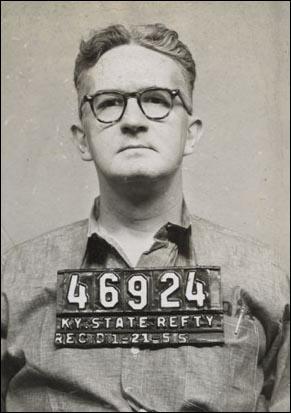
Anne Braden's trial was due to start on 14th February, but then it got postponed to the 28th, and then again and again until April, when they agreed to put off all the Wade trials until the higher courts ruled on Carl's case. At the time several civil rights activists had been sent to prison for sedition. This included Steve Nelson in Pennsylvania, who been charged under the 1919 Pennsylvania Sedition Act for attempting to overthrow the state and federal government. Unable to use wiretap evidence the prosecution was forced to rely on the testimony of FBI informant Matt Cvetic. Nelson was convicted, fined $10,000 and sentenced to 20 years in prison. Concurrent with the Pennsylvania Sedition case, Nelson and five co-defendants were indicted in 1953 under the Smith Act. All six men were found guilty and each sentenced to 5 years and fined $10,000. (27)
Steve Nelson argued his case in the publication of The Thirteenth Juror (1955). His lawyers claimed that the testimony of Matt Cvetic was deeply flawed. Daniel J. Leab, the author of I Was a Communist for the FBI: The Unhappy Life and Times of Matt Cvetic (2000) that by 1955 Cvetic had been largely discredited as a witness and the Justice Department's Committee on Security Witnesses unanimously recommended that he not be used as a witness unless his testimony could be corroborated by external sources." (28)
In 1956 in Pennsylvania v. Nelson, the U.S. Supreme Court overturned the 1919 Pennsylvania Sedition Act. The court ruled that the enactment of the Smith Act superseded the enforceability of the Pennsylvania Sedition Act and all similar state laws. In the same year the Supreme Court granted Nelson and the other five defendants in the Smith Act case a new trial on the grounds that testimony had been perjured in the earlier case. By the beginning of 1957 the Government decided to drop all charges, bringing six years of legal battles to an end. (29)
Anne Braden pointed out that their case had influenced the decision of the Supreme Court. "They saw it as a horrible example of what happens when you turn every local prosecutor loose with a state sedition law." The state prosecutor dropped all sedition charges against Anne and her co-defendants but it was not until 1956 that they overturned Carl Braden's conviction. (30) The Wade family attempted to repair their home, but amid continuing hostility, sold the house at a loss and moved back into west Louisville. (31)
Southern Conference Education Fund
Carl and Anne could not, however, return to their old lives. In order to stay safe and be in a supportive environment, they moved into a Black neighborhood, where their children wouldn’t have to see their parents being constantly ostracized. In 1957, the Bradens joined the Southern Conference Education Fund (SCEF), an organization dedicated to building White southern support for integration, and had thrown their full support behind the Bradens during their sedition trial. Its monthly newsletter, the Southern Patriot, was produced for the supporters of civil rights across the nation. During Carl’s incarceration, the Patriot had published articles by Anne and had helped her gain a national audience. The executive director of the SCEF was Jim Dombrowski and its vice president was Modjeska Simpkins. (32)
Anne recalled: "Jim Dombrowski, the architect of the ongoing SCEF, was one of the greatest people who ever lived in the South. He was a founder, with Myles Horton and Don West, of Highlander Folk School. He's been involved in various struggles for social justice since the early 1930s. He saw the need for a group of Blacks and whites working together with a one-point program: End segregation in the South... In 1957 Carl and I went to work for SCEF. They didn't have much money, so we worked for practically nothing at first. Our main job was to reach white people and help them see that civil rights was their battle, too. We didn't have many resources, and we were fighting against a lot of fear. We traveled around, linking up with college professors, students, teachers, professional people, and ministers - many of whom lost their churches when they took a stand for equal rights." (33)
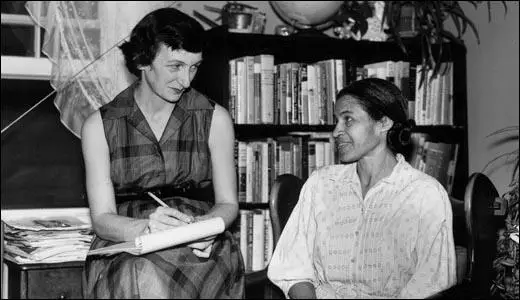
The SCEF worked closely with other civil rights organizations such as Congress of Racial Equality (CORE), Student Nonviolent Coordinating Committee (SNCC) and Southern Christian Leadership Conference (SCLC). Carl also became friends with Martin Luther King and Rosa Parks. Another close associate was Virginia Durr, a White Southern aristocrat whose husband, Clifford Durr, had worked for Franklin D. Roosevelt during the New Deal. Writing to a friend in 1959, Virginia said, “I have made a new friend, Anne Braden… Who sees life in Alabama as I do, but with even deeper insight, much deeper I think. She is a lovely and charming and gentle person with a brilliant mind and is such a comfort to me.” A few months later, she wrote: “Anne Braden has been here recently and she is a perfect darling and I love her and I think she is a very good writer too. After she was gone, the Attorney General came out with a huge warning to all the people of Alabama to beware of her as she was so dangerous.” (34)
In 1958 the House Committee on UnAmerican Activities (HUAC) announced it wanted to investigate left-wing activists in the Deep South. The SCEF produced a letter signed by 200 Black leaders that in essence said: "We've got enough problems down here. Our churches are being bombed. Our kids are being attacked as they go to school. The last thing we need is the House Un-American Activities Committee coming here to attack white people who are supporting justice." (35)
Carl Braden was indicted in 1958 for contempt of Congress after refusing on First Amendment grounds to testify before the HUAC. He stated "My beliefs and my associations are none of the business of this Committee." Braden's conviction was upheld 5-4 in the Supreme Court in 1961 and he went to prison but was released early in 1962. (36)
The Sixteenth Street Baptist Church in Birmingham was used as a meeting-place for civil rights leaders such as Martin Luther King, Ralph David Abernathy and Fred Shutterworth. Tensions became high when the Southern Christian Leadership Conference (SCLC) and the Congress on Racial Equality (CORE) became involved in a campaign to register African American to vote in Birmingham.
On Sunday, 15th September, 1963, a white man was seen getting out of a white and turquoise Chevrolet car and placing a box under the steps of the Sixteenth Street Baptist Church. Soon afterwards, at 10.22 a.m., the bomb exploded killing Denise McNair (11), Addie Mae Collins (14), Carole Robertson (14) and Cynthia Wesley (14). The four girls had been attending Sunday school classes at the church. Twenty-three other people were also hurt by the blast. The bombing was the fourth in less than a month, and fiftieth in two decades, in what had become known as "Bombingham." (37)
Diane Nash and her husband, James Bevel, in response to the bombing, became committed to raising a nonviolent army in Alabama. Its main objective was obtaining the vote for every black adult in the state. Alabama and other southern states had effectively excluded blacks from the political system since disenfranchising them at the turn of the century. In 1962, Deputy Attorney General Burke Marshall reported that “racial denials of the right to vote” existed in eight states, with only fourteen percent of eligible black citizens registered to vote in Alabama. In Mississippi, 42% of the population were black but only 2% were registered to vote. (38)
This eventually became known as the Selma Voting Rights Campaign. Nash told Martin Luther King: "He (King) could notorious a battered people for nonviolent action and then give them nothing to do. After the church bombing, she and Bevel had realized that a crime so heinous pushed even nonviolent zealots like themselves to the edge of murder. They resolved to do one of two things; solve the crime and kill the bombers, or drive (Governor George Wallace and Police Chief Albert J. Lingo) from office by winning the right for Negroes to vote across Alabama." (39)
Diane Nash attracted the attention of President John F. Kennedy, who selected her to serve on a committee to develop a national civil rights platform, which later became the 1964 Civil Rights Act. The next year, Nash planned marches from Selma to Montgomery to support voting rights for African Americans in Alabama. Carl and Anne Braden took part in the march. When the peaceful protesters tried to cross the Edmund Pettus Bridge to head to Montgomery, police severely beat them. Stunned by images of law enforcement agents brutalizing the marchers, Congress passed the 1965 Voting Rights Act. (40)
Carl Braden the executive director of the Southern Conference Education Fund, became the leader of the Training Institute for Propaganda and Organizing in Louisville, Kentucky in 1971. However, he died of a heart attack on 18th February, 1975. He was 60 years old. (41)
Primary Sources
(1) Lynn Burnett, The Life of Anne Braden (28th July, 2019)
On her first day of work at the Louisville Times – March 31, 1947 – Anne was introduced to her new colleagues… including the man who would become her future husband, Carl Braden. Unlike Anne, who had been born into a very comfortable upper-middle-class life, Carl had been born into a struggling working-class family. His father had been a railroad worker who worked such long hours he almost never saw his family. A union man, he lost his job when Carl was eight years old for participating in a failed strike demanding better working conditions. For months afterwards, the family ate almost nothing but beans. One of Carl’s dominant childhood experiences was of hunger – in the deep, psychological sense of not knowing when you would be able to get food to relieve it. For Carl, hunger meant growing up early. He became deeply aware of injustice… of the fact that many people, like his family, worked hard and still had nothing, and yet were harshly judged as poor White trash by families exactly like Anne’s. Carl joined gangs and learned to fight when he was very young. Like so many others, he also learned to drink and smoke to alleviate the pain of having ones dignity ripped away. He would continue to drink, smoke, and fight until World War II, when he decided to swear off it all to better commit himself to his work as a journalist and labor organizer.
Carl had been a very thoughtful child – a voracious reader who spent hours listening to the conversations of his large extended family, who often gathered around the kitchen table for discussion. Carl’s father was an agnostic socialist who had named his son after Karl Marx; whereas his mother and her extended family were all devout Catholics. Carl’s father was not anti-religious, but believed that matters of the afterlife and questions about God were beyond the human capacity to understand. He stayed quiet when conversations turned towards religion, but often mentioned at the end of religious conversations that Jesus’s teachings seemed right in alignment with socialism to him. The young Carl agreed with his father. They were all talking about loving thy neighbor, about the brotherhood and sisterhood of humankind that his future wife Anne had also been drawn to as a child. Carl’s heroes, growing up, were Christian saints on the one hand, and socialist leaders on the other. To him, they seemed to hold the same ideals.
When Carl was not out roaming around with his gang getting into fights, he was at home absorbed in books. His parents had only gone to elementary school, and they pushed their children to do well in school so they could have a better life than them. Carl went to a Catholic school, and when he was thirteen the nuns encouraged him to put his intellectual abilities in the service of God and to begin studying to become a priest. Carl accepted this as an honor that would help him fulfill his young desire to live a life of social responsibility. However, by the time he was sixteen, he found himself rebelling against the church, and soon dropped out of school entirely. He had not turned against the church’s teachings, however, but was rather rebelling against the structures of authority within his church, school, family, and ultimately, society. Looking for work as a young, rebellious, working-class intellectual, Carl gravitated towards journalism, just as Anne would later do. He was given the task of reporting on the police department, where he witnessed incredible corruption and brutality. Eight years older than his future wife Anne, Carl was soon reporting on the Great Depression, including the intense labor struggles of local impoverished coal miners… all while still a teenager. The combination of his upbringing and the things he witnessed as a reporter led him to become a devoted labor organizer.
When Anne was first introduced to Carl, he was covering labor issues for the newspaper, while she was covering education. However, from time to time, Anne would help Carl on his labor reporting. When she showed interest in the subject, he began giving her books to read on socialism and the history of labor organizing. She was soon attending union meetings with him. Anne had been raised to believe that people like her family were well off because they were smart, disciplined, and hard working, and that if people were poor it meant they had made bad decisions or were lazy. Anne had long doubted these class prejudices, and understanding the history of labor organizing – and getting to know the organizers themselves – destroyed them completely. She came to see the working class as another exploited group suffering from negative stereotypes, who, like African American freedom fighters, were dignified, intelligent, and fighting hard for the right to live a decent life. Carl helped Anne commit herself to ending class oppression, and she helped him commit himself to the battle against White supremacy.
(2) The New York Times (25th February, 1975)
Carl Braden, former executive director of the Southern Conference Education Fund, who since 1971 had led the Training Institute for Propaganda and Organizing in Louisville, Ky., died of a heart attack last Tuesday in Louisville. He was 60 years old.
Mr. Braden, who left a Roman Catholic seminary in Louisville at the age of 16 to become a newspaper reporter, had worked for newspapers there and in Cincinnati and aided union groups.
He and his wife, the former Anne McCarty, were indicted for sedition under a Kentucky law in 1954 after they bought a house and sold it to a black couple. The indictments were dismissed in 1956, and Mr. Braden soon joined the Southern Conference Education Fund, which was working for blackwhite cooperation in civil rights.
The Bradens were indicted again for sedition in 1967 after Pike County officials found “a truckload of seditious material.” They were accused of seeking to spread “the Communist theory… to overthrow the government of Pike County.” The case ended after the United States Supreme Court ruled in the Steve Nelson case that state sedition laws were unconstitutional.
Mr. Braden was indicted in 1958 for contempt of Congress after refusing on First Amendment grounds to testify before the House Committee on UnAmerican Activities. His conviction was upheld 5-4 in the Supreme Court in 1961. He went to prison and was released early in 1962.
Surviving are his widow, son. James of St. Paul, and a daughter Elizabeth.
